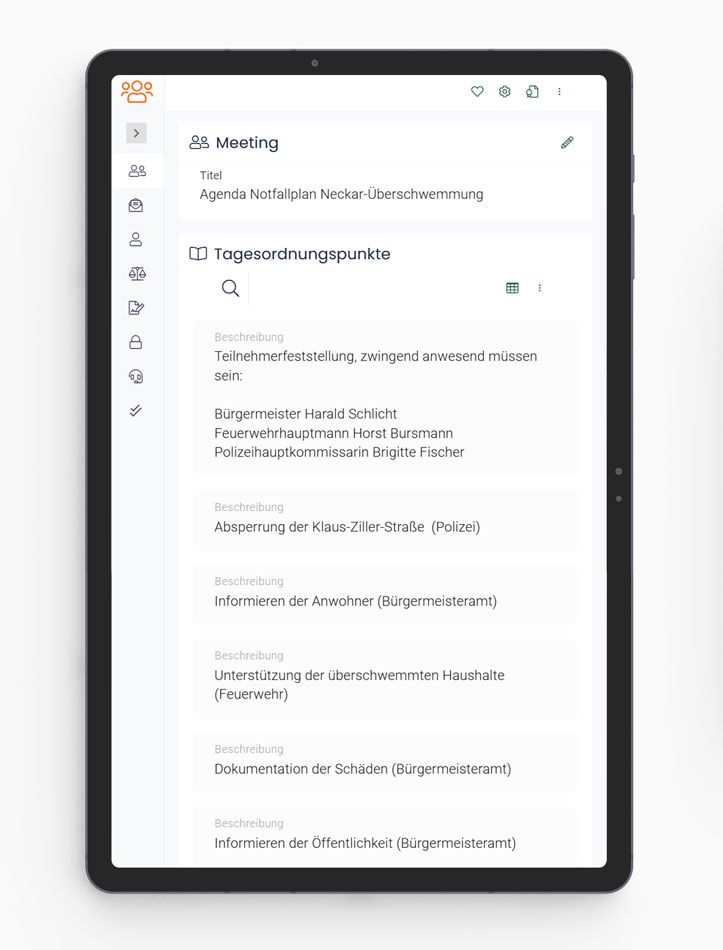From Corona to the gas crisis in Germany: one crisis follows the next and often there is no emergency plan. FOMs can support the regular planning meetings of a wide variety of crisis teams through standardization.
An Editorial of the FOM Magazine
Corona, war, gas crisis, climate change, inflation. The world does not come to rest. For several years now, one crisis has followed the next, and the challenges are becoming ever greater and more global. At the same time, the need for regional and local crisis management is increasing.
Nevertheless, only very few countries, regions or municipalities and also only very few organizations or corporations have set up a permanent crisis team that can spring into action and manage crises at any time. Past and current crises show that we are usually ill-prepared for contingencies. Both the state and companies need better crisis management.
Corona crisis team: an example of poor crisis management
Perhaps the most poignant example of inadequate crisis management in recent years was the Covid pandemic: many mistakes were made at the international, national, regional, and local levels that slowed containment of the viral disease.
For example, the Independent Panel for Pandemic Preparedness and Response (IPPPR) found that the COVID pandemic could have been prevented through better international coordination and a functioning early warning system-or at least the Corona Crisis Staff could have better managed the crisis.
"Poor strategic decisions, a lack of will to address inequalities, and an uncoordinated approach created a toxic cocktail that turned the pandemic into a catastrophic humanitarian crisis," the IPPPR report, prepared at the request of the World Health Organization (WHO), found.
Better crisis management could have been done at the national level as well: Frank Roslieb, the managing director of the Institute for Crisis Research, a spin-off of Christian Albrechts University in Kiel, gives the German government's early crisis management a good grade. In the first summer, however, the government was "a bit laissez-faire.
In the fall, it would have been possible to estimate the extent of the infections, but the crisis plan would not have convinced the state premiers. In the meantime, Roslieb says, there is a feeling that the "map" has been lost.
Organizations and corporations were also ill-prepared for the pandemic. A global survey by Pegasystems shows that 22 percent of German companies (16 percent worldwide) did not have sufficient IT infrastructure for the rapidly growing number of remote workstations.
Overall, almost a quarter of German companies (17 percent worldwide) say that their crisis management would not be up to the demands of an actual crisis situation.
Gas crisis Germany 2022: Do not repeat mistakes in crisis management
It is true, of course, that you are always smarter afterwards. This article is therefore not about apportioning blame, but about creating efficient crisis management systems to deal with future crises.
For example, the current gas crisis in Germany, which threatens Germany's gas supply.
Due to the war in Ukraine, the economic sanctions against Russia and the restrictions on gas supplies, gas prices have now risen. Gas prices could multiply in 2022, which will place a heavy burden on companies and also private households.
So, in order to contain the development of gas prices in 2022 and secure the gas supply in Germany, an emergency gas supply plan is needed.
Planning meetings and crisis teams as a central crisis management tool
Crises usually come without notice, but rarely by surprise. The 2022 gas crisis, for example, could have been foreseen last year when tensions on the Russian-Ukrainian border increased.
Looking at the development of gas prices in 2022, it is foreseeable that the crisis will intensify in the course of the year. Accordingly, the crisis team should already create the framework conditions for effective crisis management.
And this applies not only to current crises such as the corona pandemic or the 2022 gas crisis. Emergency plans should also be kept ready for other crisis situations - at the international, national, regional and local levels.
Central to crisis preparedness are regular crisis team planning meetings. These meetings serve to continuously review planning scenarios and provide comprehensive, readily available and well-documented emergency plans.
If a crisis then occurs, nothing must be left to chance.
How FOM software supports crisis management
In the digital age, crisis teams can also meet in online meetings. Efficiency is crucial, because time should not be wasted in crisis situations. FOM software provides indispensable assistance in this regard:
In planning meetings, crisis teams should prepare agenda templates that give structure to crisis meetings in the event of an emergency. These should already contain the most important steps of an emergency plan, including the respective responsibilities. In this way, it is already clear who will take which steps and when, and the emergency agenda is available to everyone.

In addition, the key contact persons should already be stored in a participant directory . If a crisis occurs, the invitations for the relevant committees can be sent out at the push of a button. The crisis team can then meet within a few hours and already has an emergency plan, an agenda and all the necessary people are informed.
During meetings, participants can use voting tools to make democratic decisions. For example, certain measures can be voted on or responsibility can be transferred to a specific person or institution by means of a ballot.
Automated minutes ensure that the content of meetings, voting results, attendees, and resolutions are documented. These minutes can then be made available to meeting participants and, in some circumstances, to the public or the workforce.




